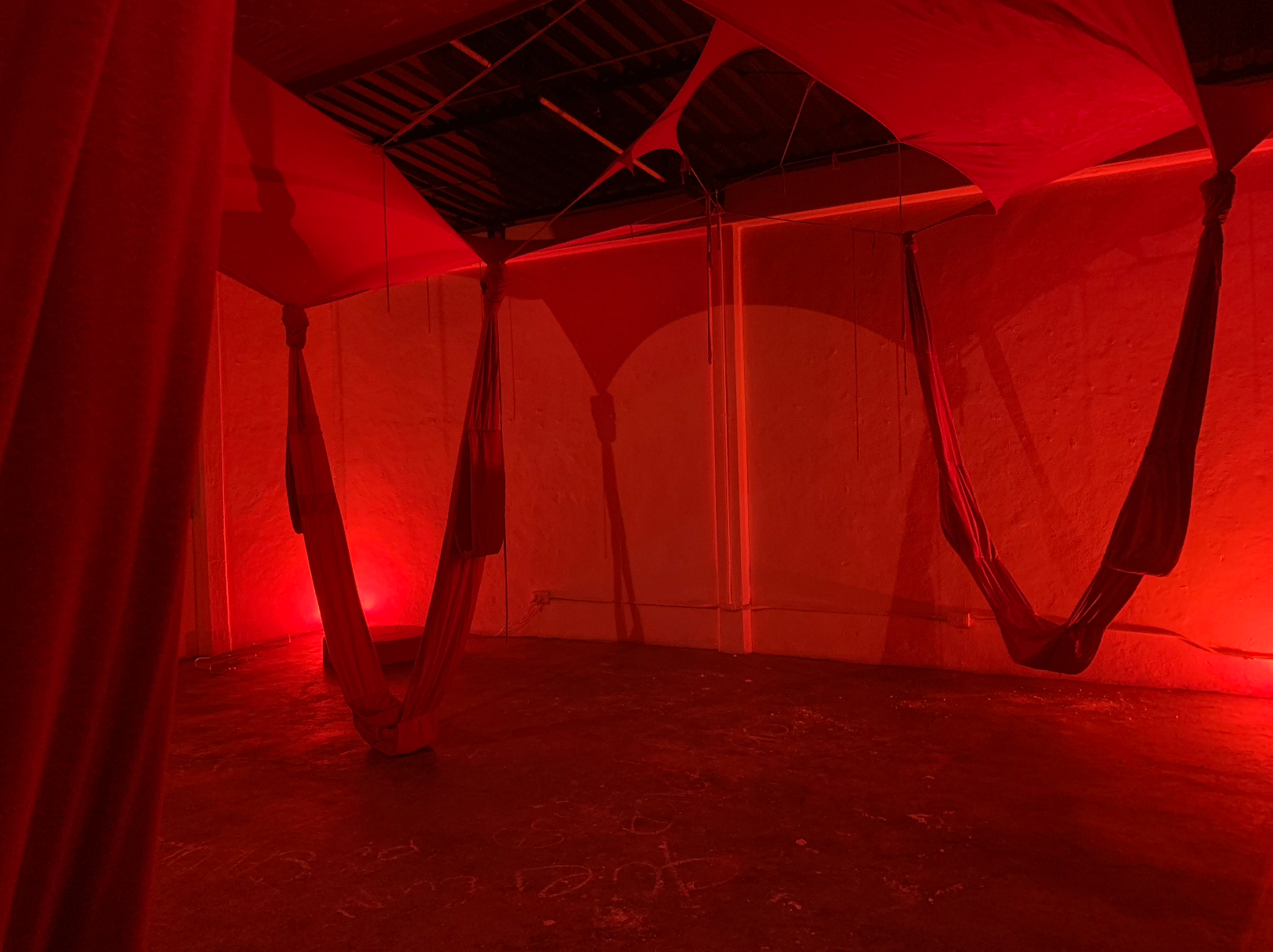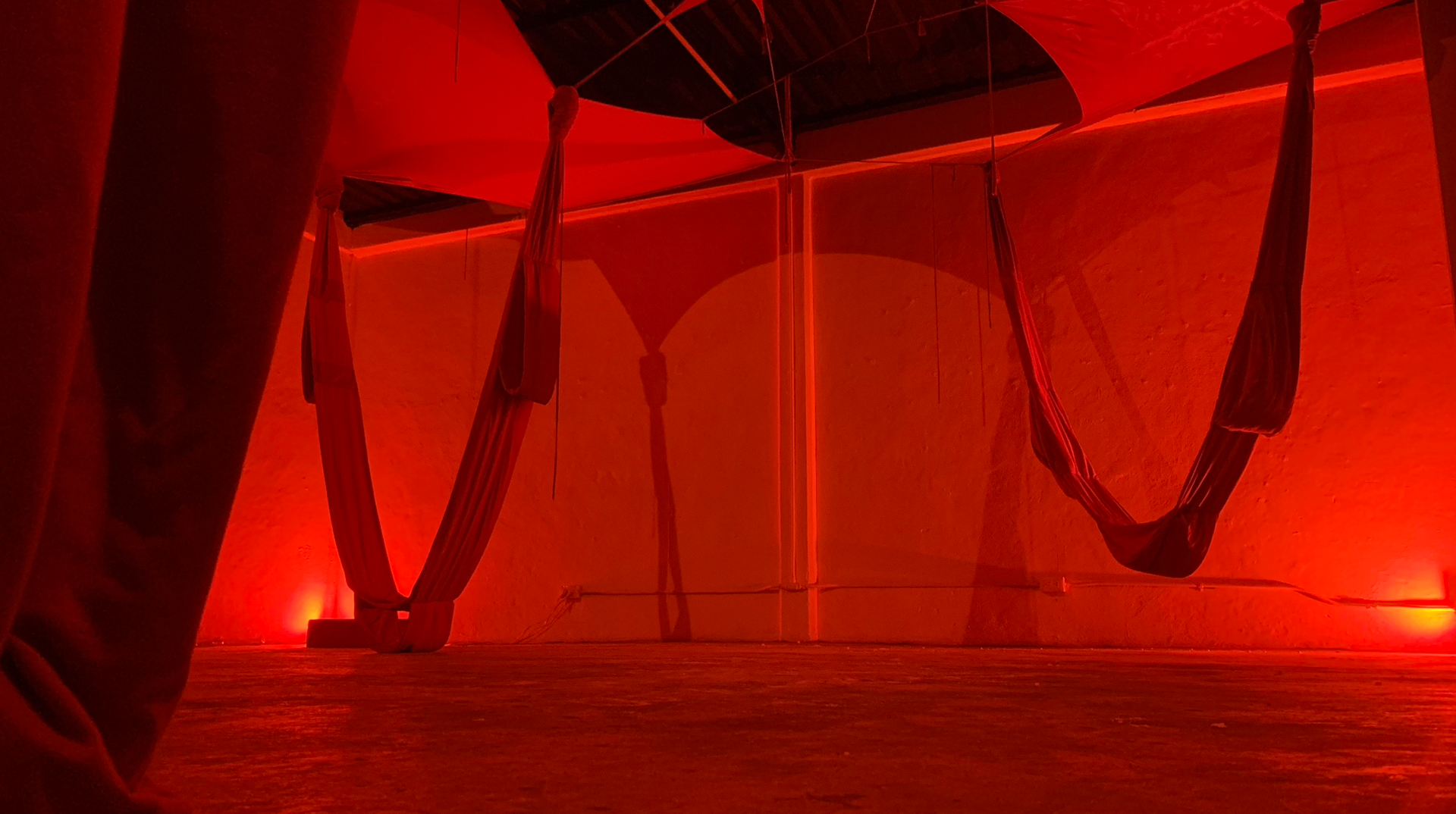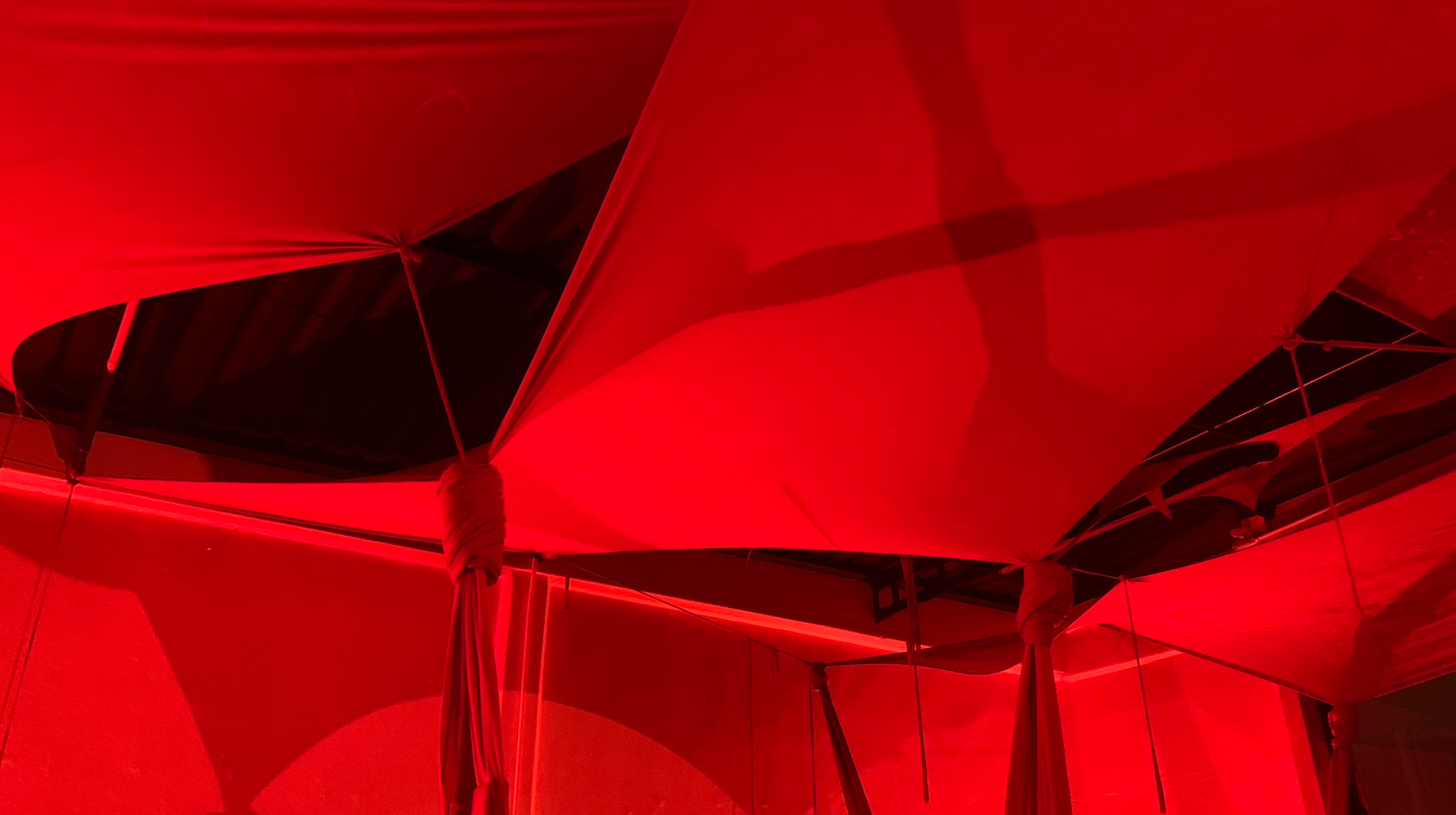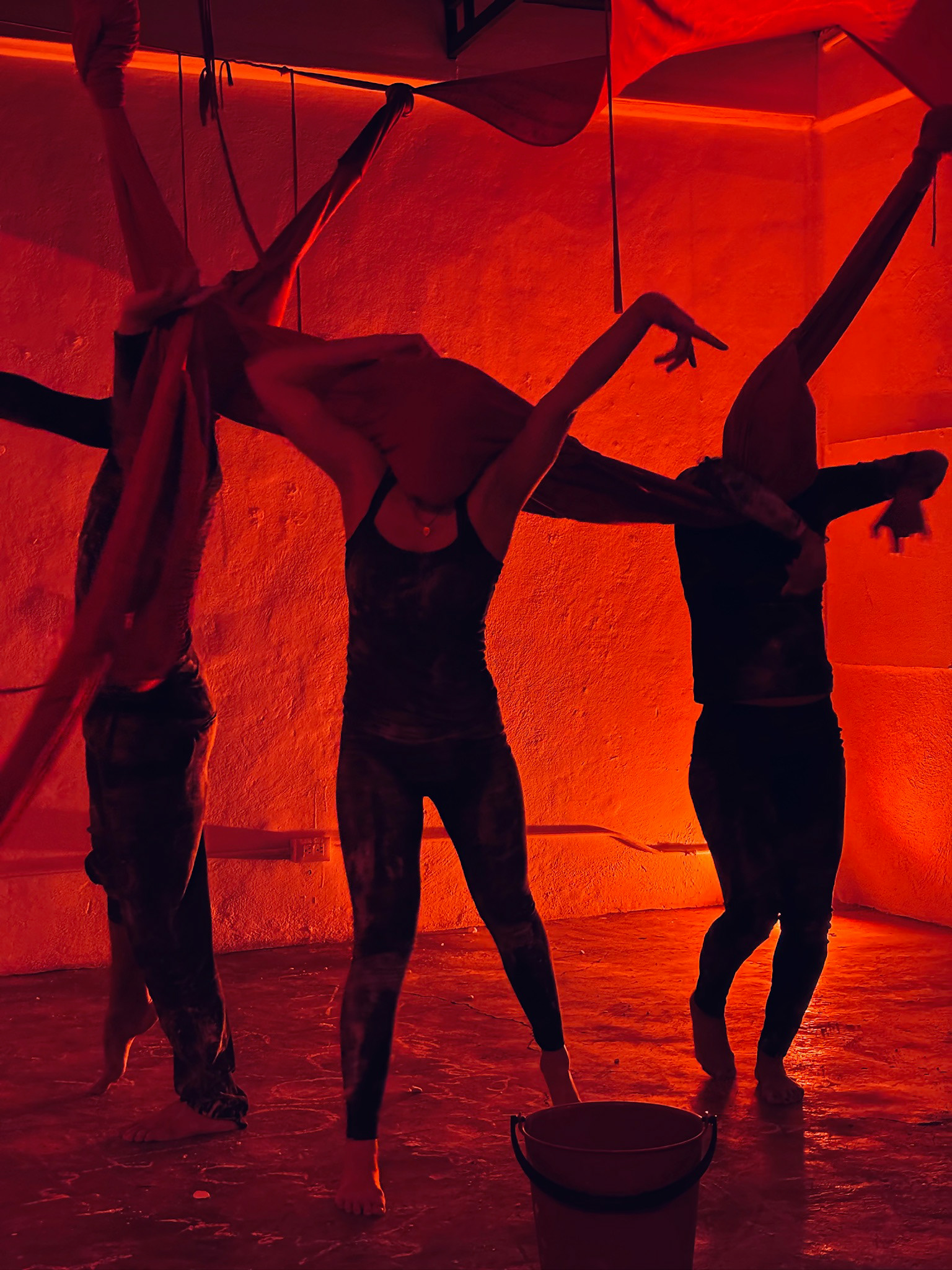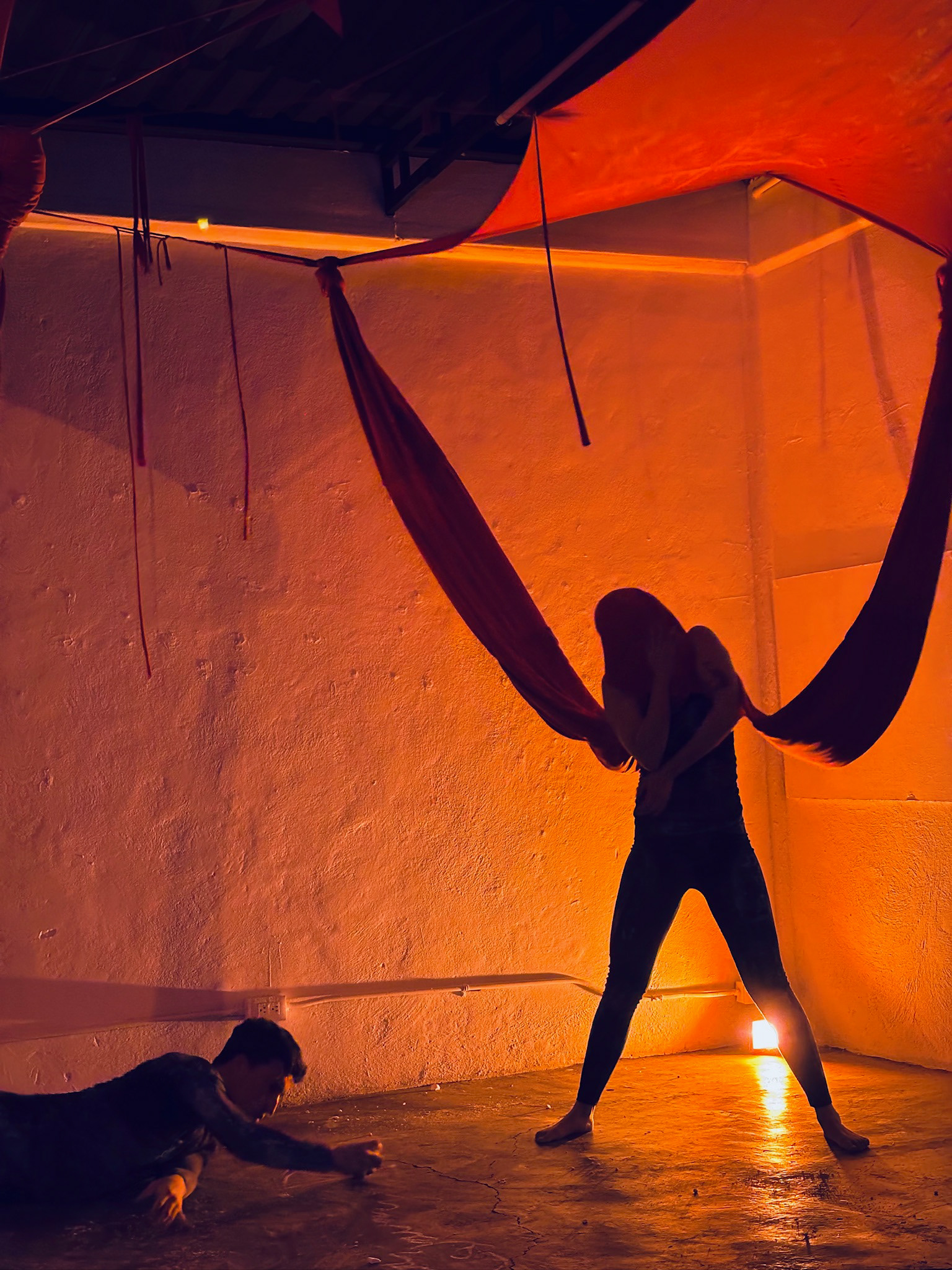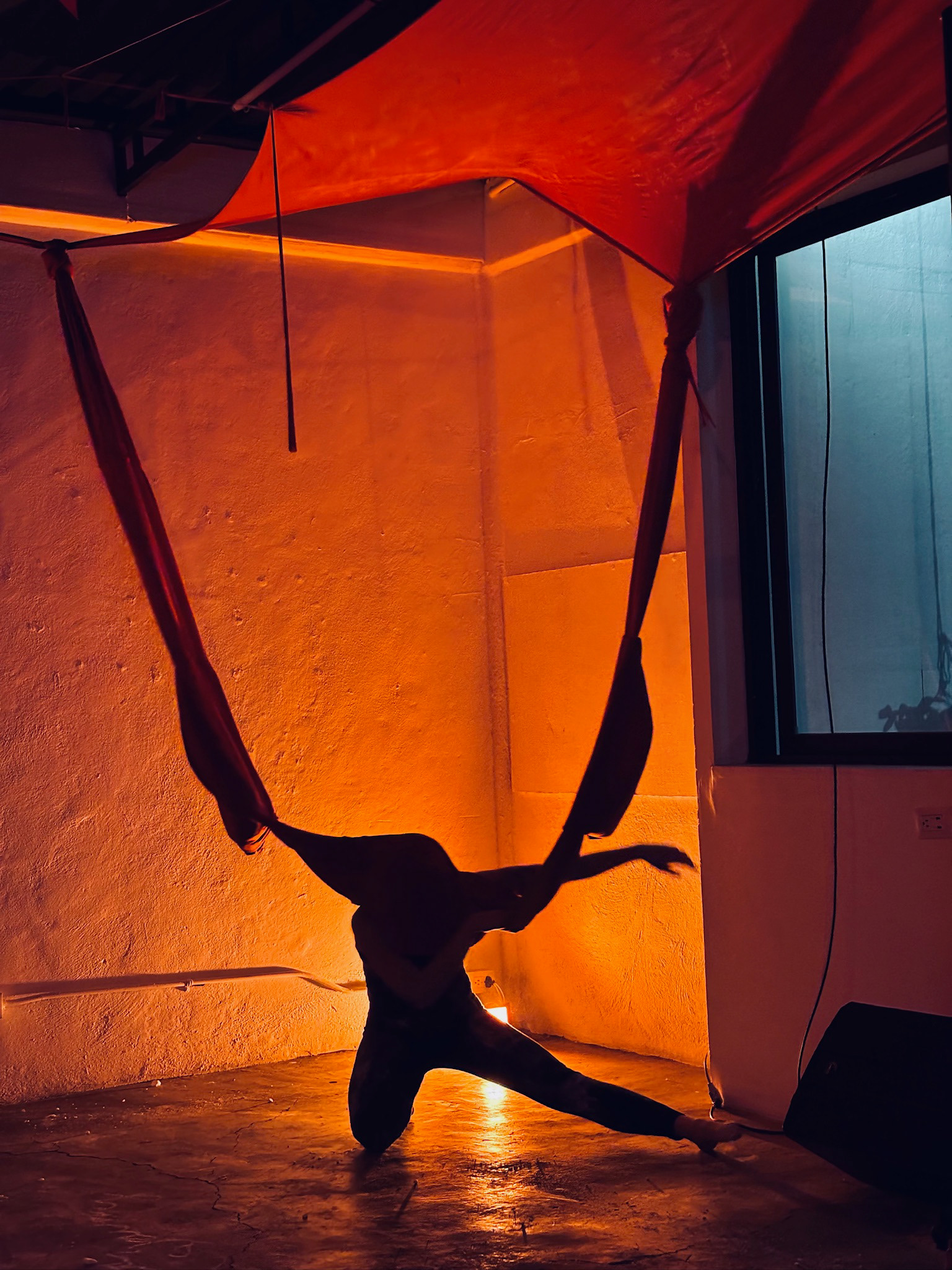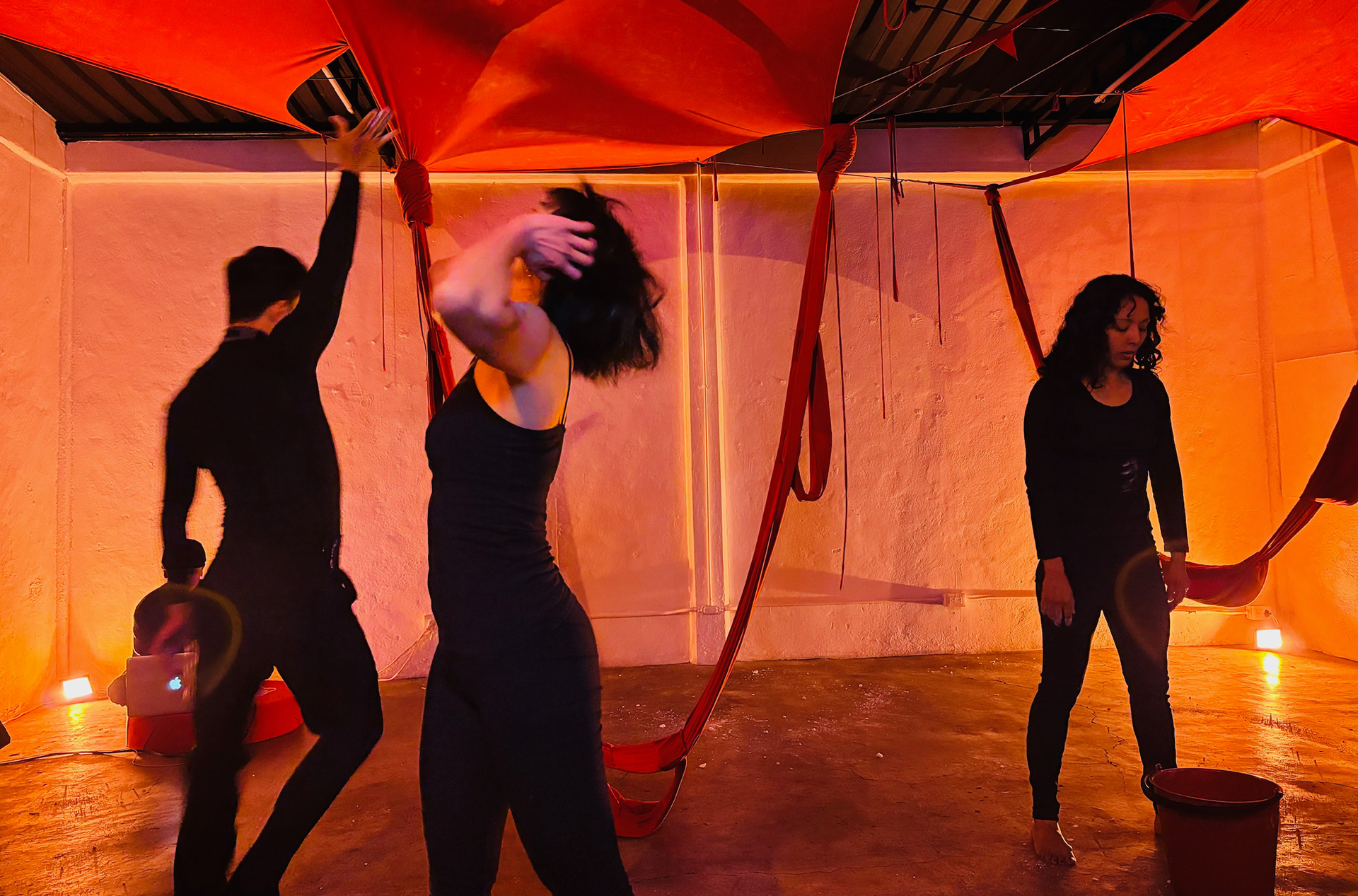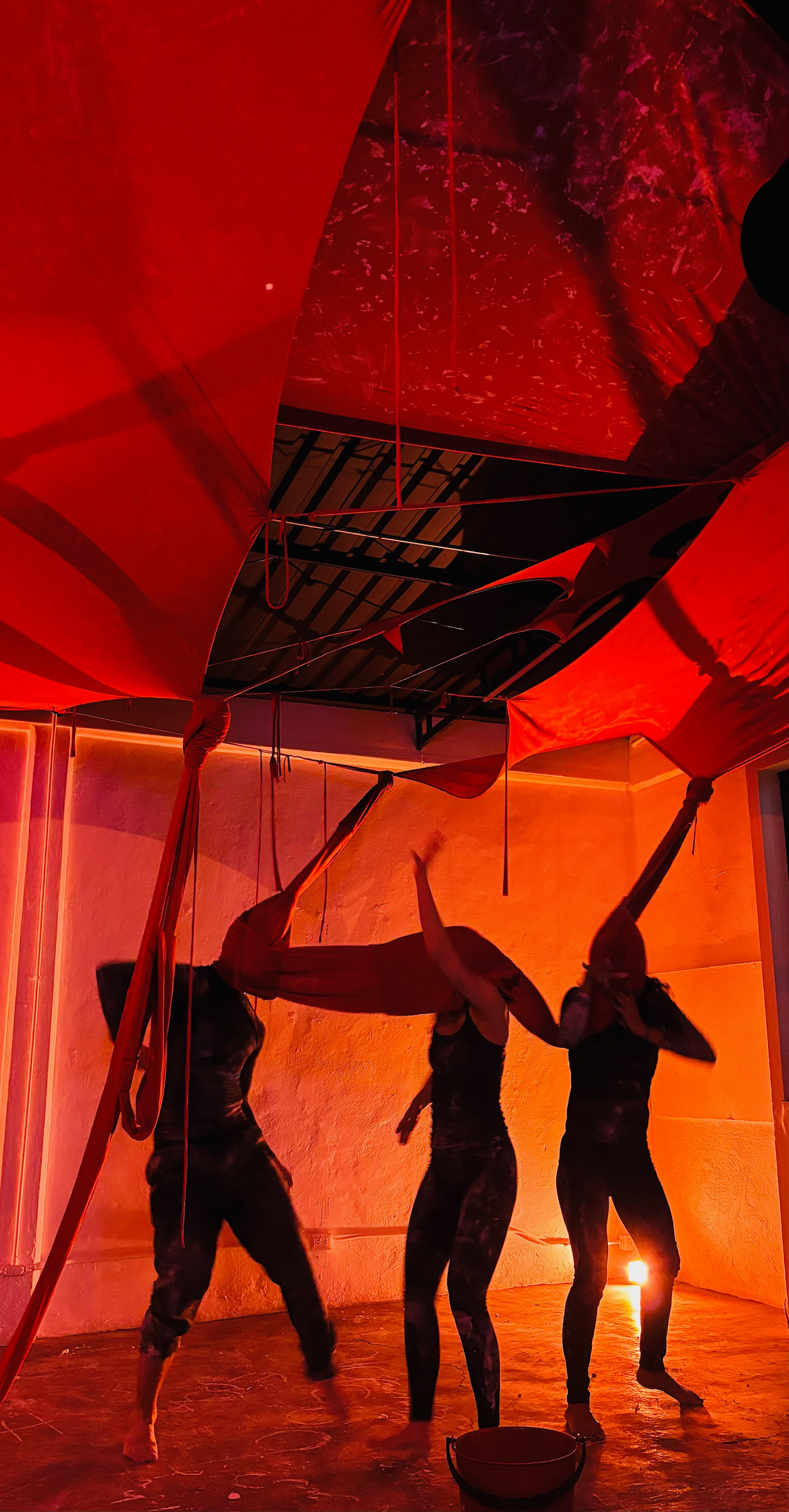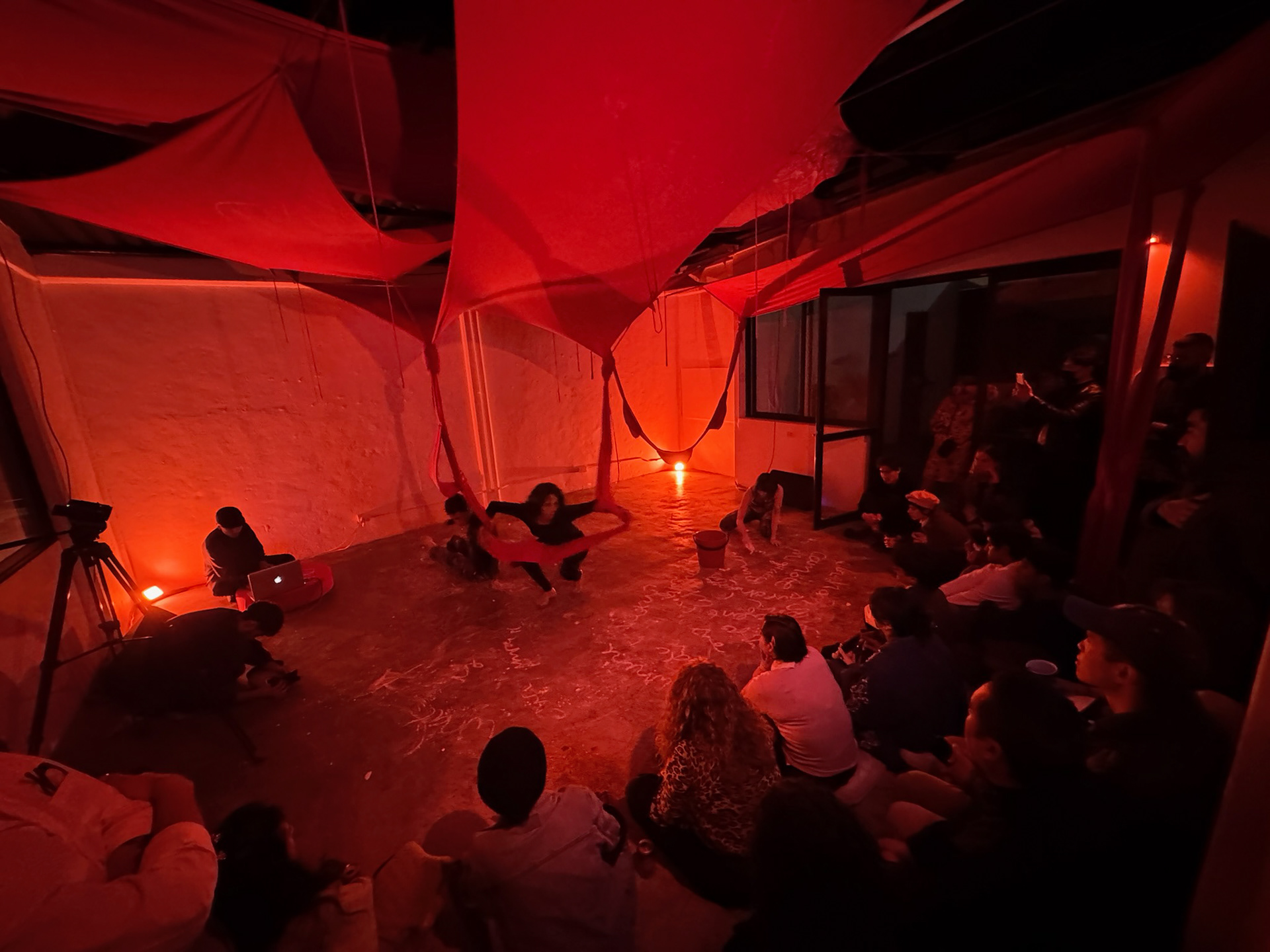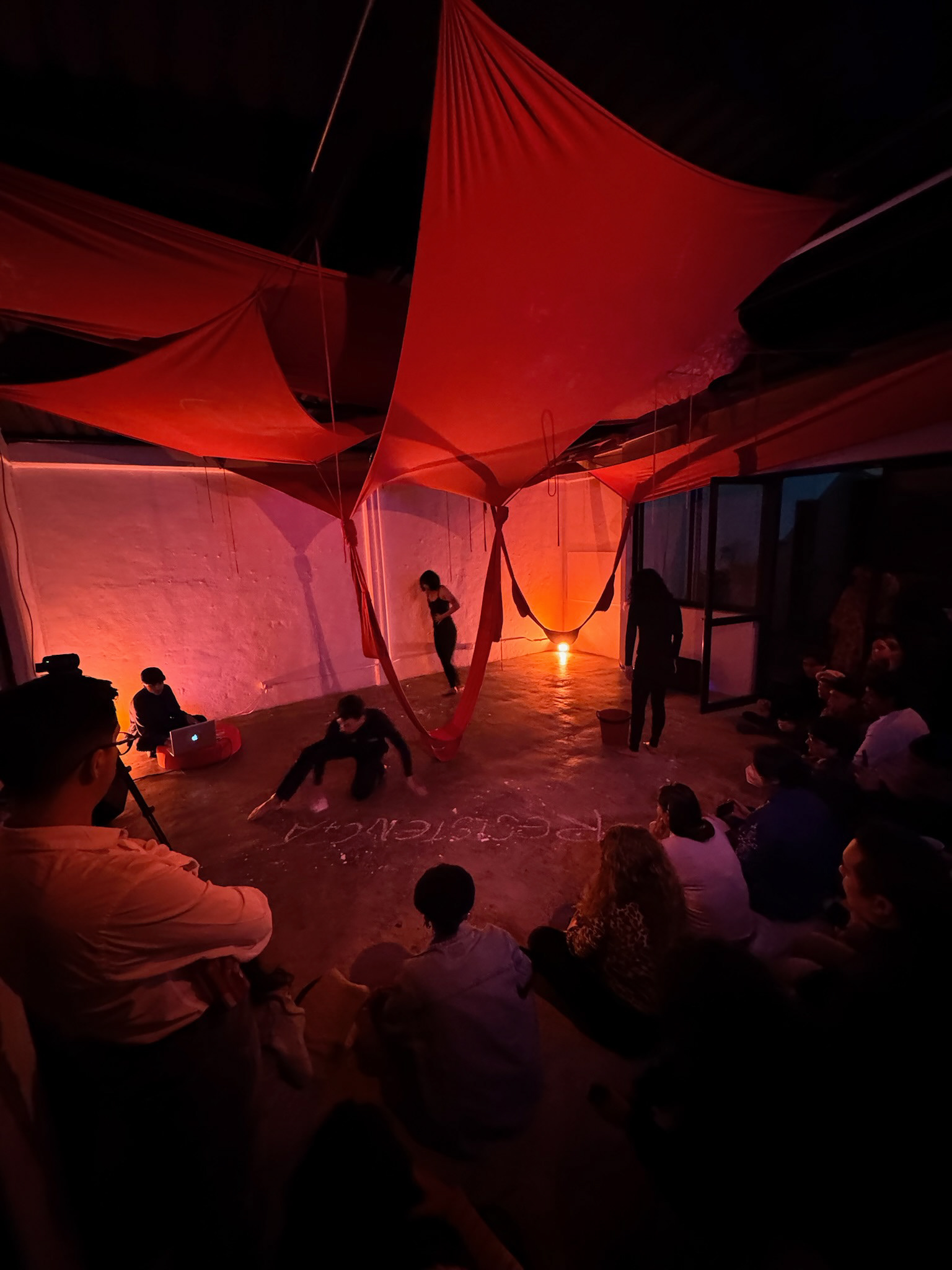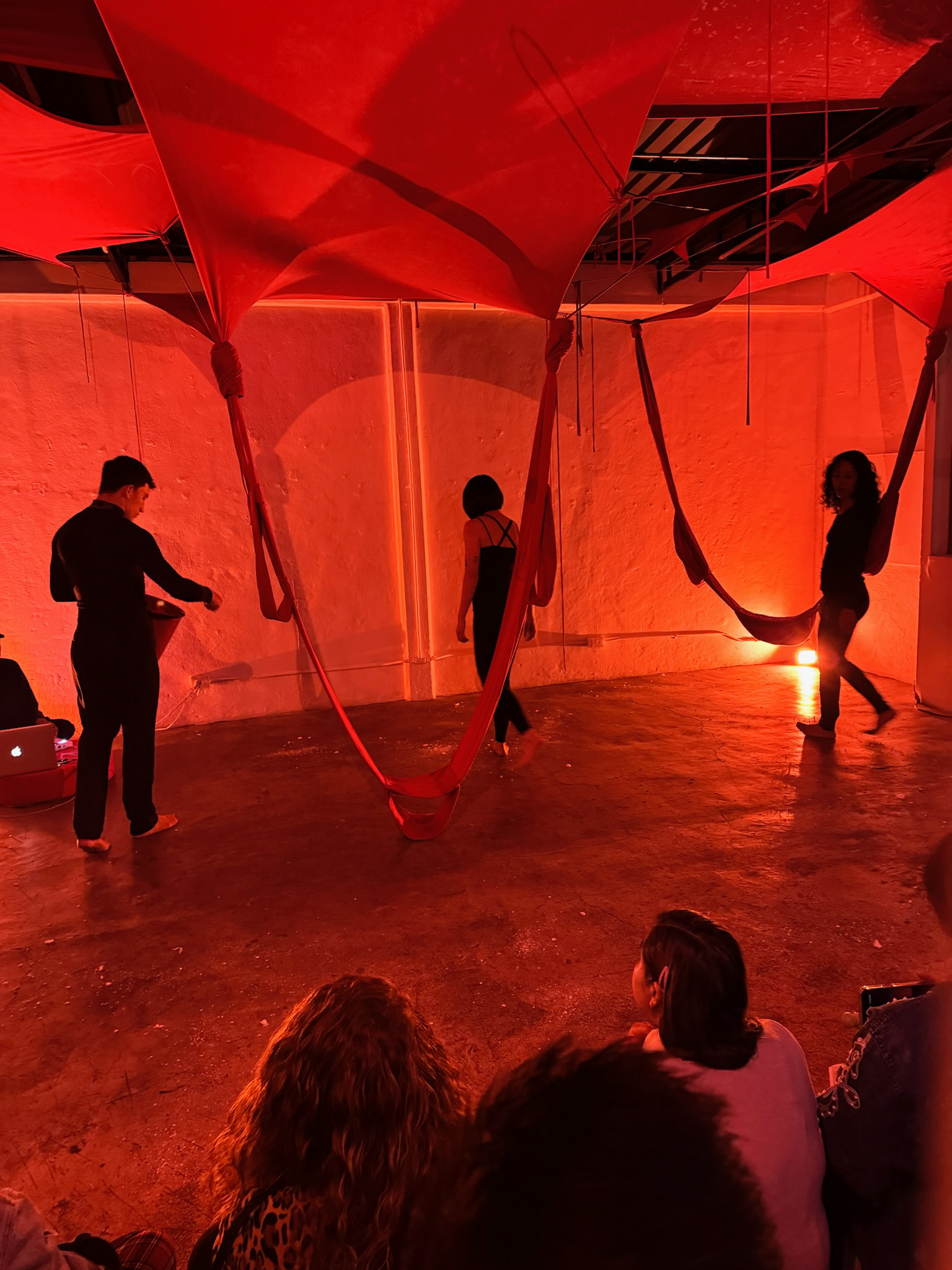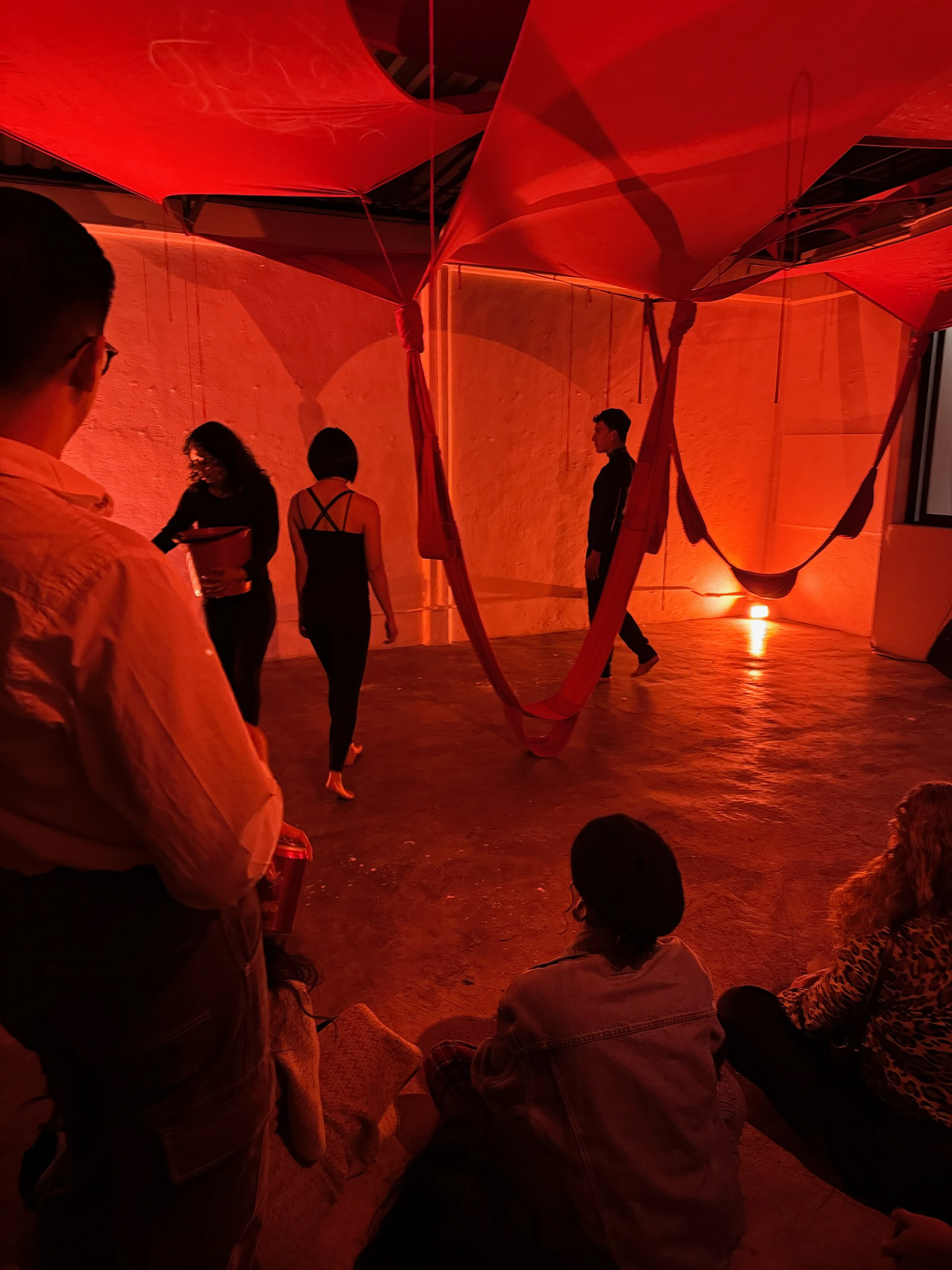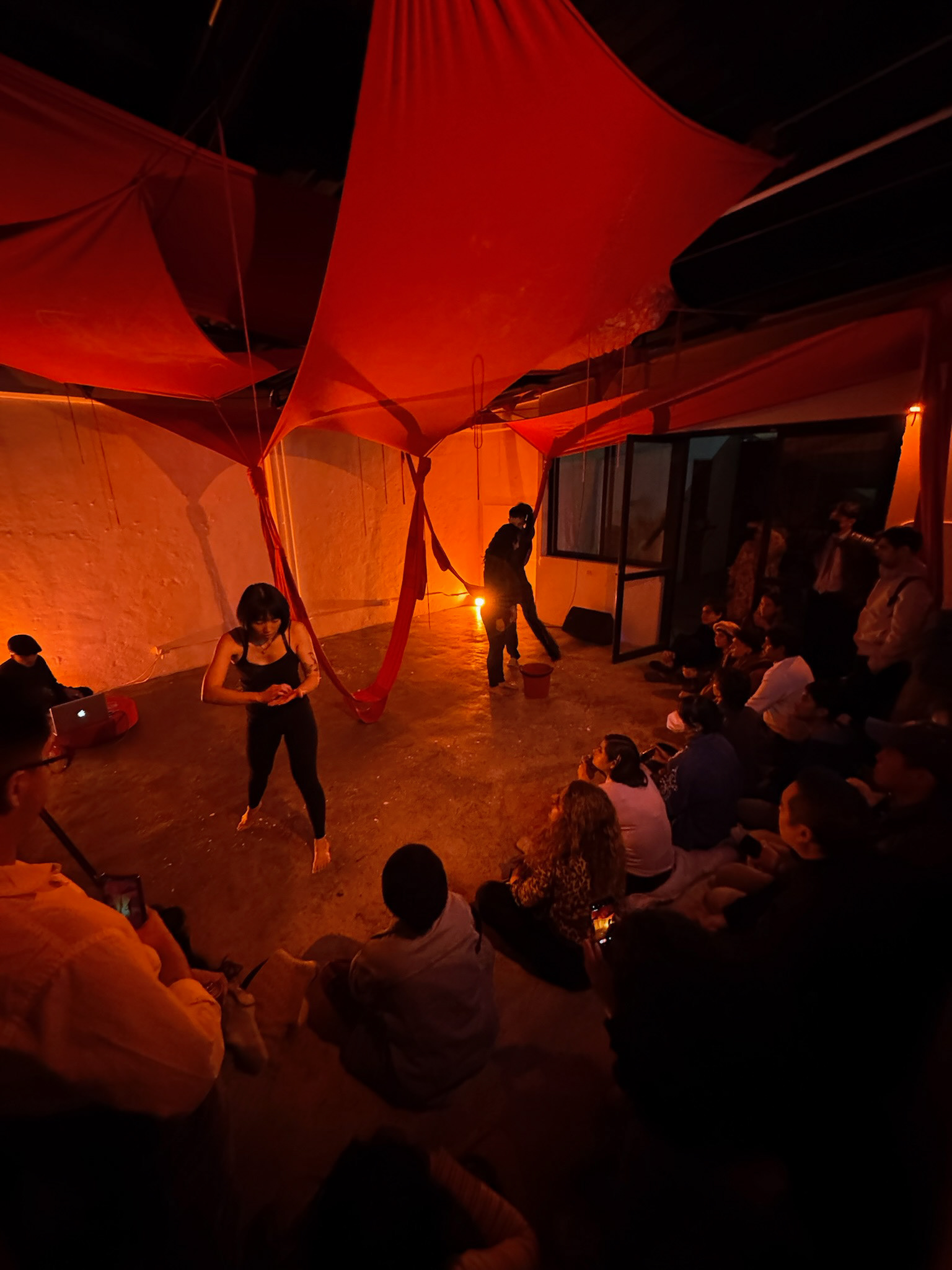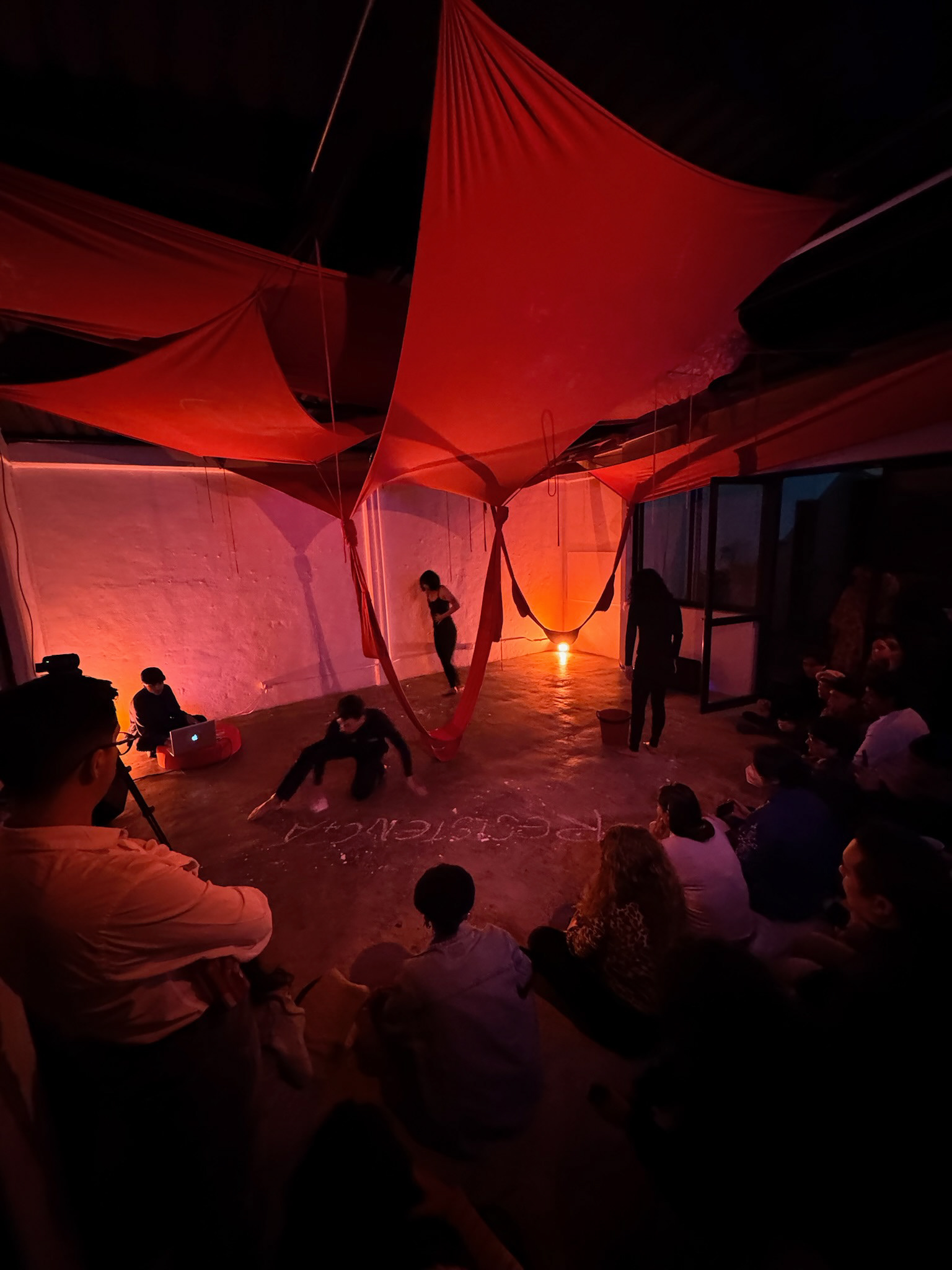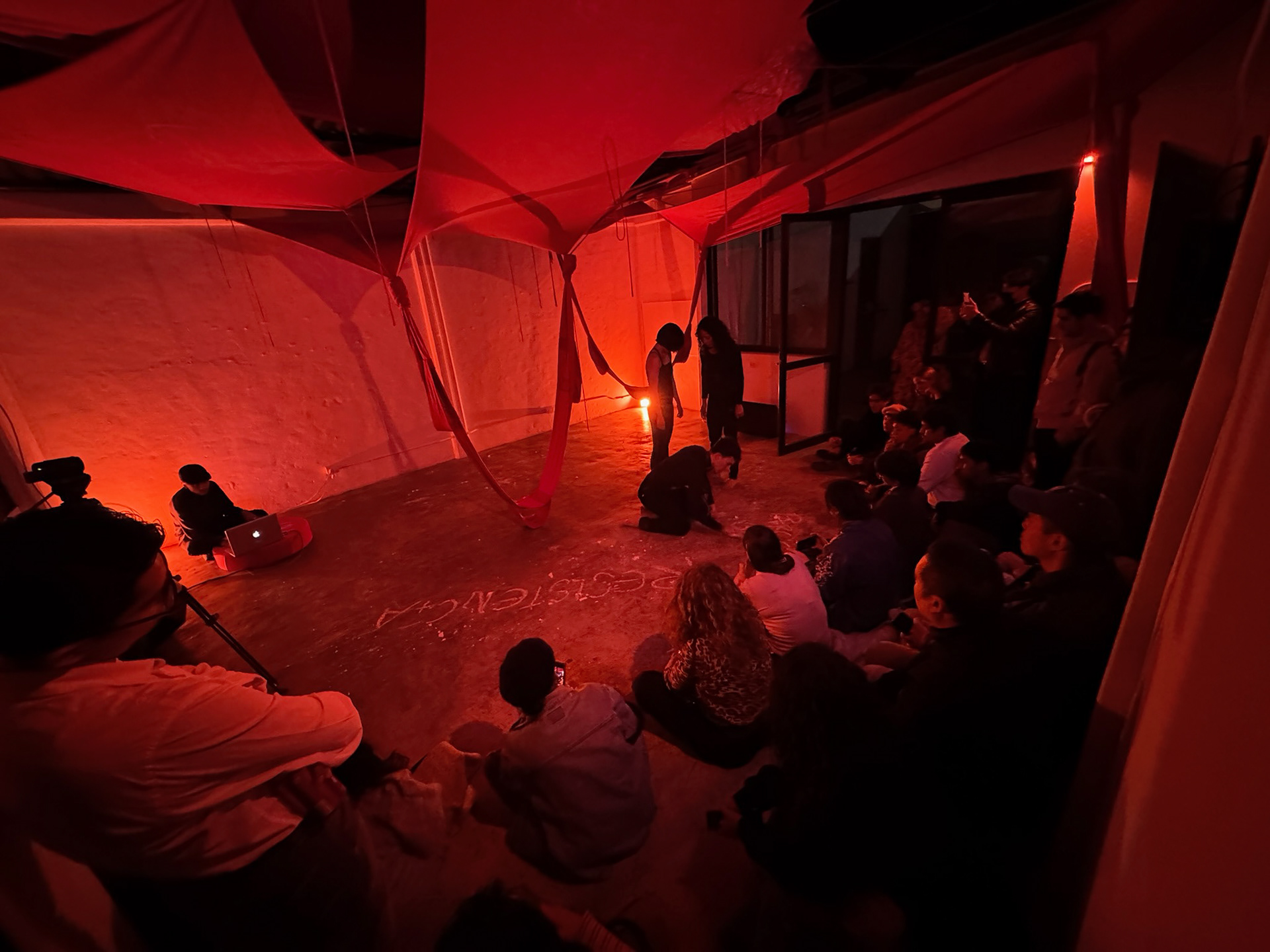Curaduria por Lesdavag
“Where to Land (Dónde Caer?)”
Exposición Individual de
Jayme Wong
Exposición Individual de
Jayme Wong
La muestra de Jayme Wong explora migración, identidad y memoria cultural desde una perspectiva íntima. Como artista taishanesa de tercera generación en la diáspora, su práctica multidisciplinaria convierte experiencias personales en reflexiones colectivas. A través de una performance con tela roja y ladrillos de gis, plantea preguntas sobre pertenencia, desplazamiento y resiliencia.
El título, con su doble lectura en inglés y español, introduce una tensión lingüística y visual que refuerza la sensación de inestabilidad propia de quien migra. La ausencia del signo de interrogación inicial en español sugiere incertidumbre, falta de anclaje y ambigüedad cultural.
La tela roja, metáfora recurrente en su obra, simboliza vínculos, memoria y herencia. A través de una coreografía que mezcla Punking/Waacking con movimiento experimental, Wong convierte la tela en una extensión de su cuerpo. En el contexto de la Ciudad de México, sus gestos también evocan el impacto del turismo y la gentrificación sobre las comunidades locales, con tensiones que desplazan a los residentes de siempre.
Los ladrillos de gis, al deshacerse lentamente, marcan el espacio con huellas efímeras que remiten a las memorias que dejamos al migrar. Su erosión sugiere tanto la fragilidad como la persistencia del recuerdo.
El Barrio Chino de la ciudad, cargado de historias híbridas, se convierte en un marco simbólico para la pieza. Al conectar la historia migratoria de su familia con experiencias compartidas, Wong construye un puente entre lo íntimo y lo colectivo.
En conjunto, la propuesta ofrece una visión poética y crítica del movimiento humano, la transformación identitaria y la capacidad del arte para generar empatía. Con gestos medidos, materiales simples y una narrativa potente, Jayme Wong nos invita a reconsiderar cómo y dónde construimos sentido de hogar.
Video performance "Donde Caer? Por Jayme Wong
Colaboradores en la producción y elaboración del video performance
Artista Jayme Wong @itsjaymew
Curaduría: Lesdavag y dirección de video (@lesdavag)
Confección de esculturas: Amaranta Ibarra (@amarantaie)
Edición de video y fotografía: Diego Serrano @d____ y Rubiano Miguel @rubiano_miguel
Colaboradores en la producción y elaboración del video performance
Artista Jayme Wong @itsjaymew
Curaduría: Lesdavag y dirección de video (@lesdavag)
Confección de esculturas: Amaranta Ibarra (@amarantaie)
Edición de video y fotografía: Diego Serrano @d____ y Rubiano Miguel @rubiano_miguel
Ensallo Video 1 | Locación Barrio Chino | Ciudad de Mexico
